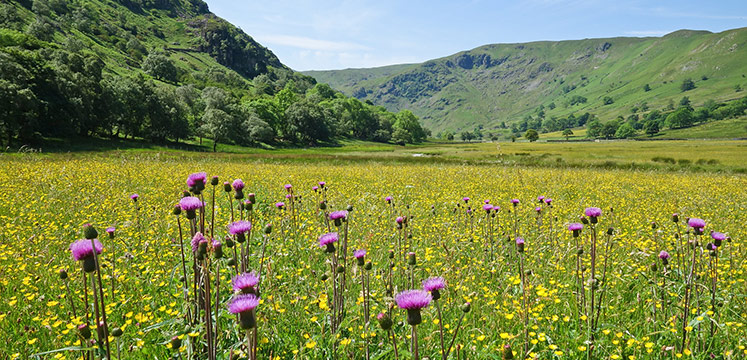
Author: Tim Duckmanton, Lake District National Park Authority
The Lake District National Park faces the biggest change in half a century with the implementation of the Agriculture Act 2020 and the delivery of the Government’s 25 Year Environment Plan. We know from our State of the Park reporting and developing this Plan that there is huge opportunity to restore nature to celebrate, sustain and enhance the Lake District National Park’s Vision and Special Qualities, and World Heritage attributes of Outstanding Universal Value.
Farming led nature recovery can improve, expand, buffer, and connect core nature sites and be at the heart of how we support farmers and other land managers through these changes. It can work alongside and in combination with other existing and new nature recovery approaches that are active today.
There are many good examples of agri-environment schemes, landscape restoration, and catchment initiatives, which positively contribute towards looking after this special landscape. These need to become more widespread if we are to protect and restore precious habitats, biodiversity and soil quality to adapt to climate change across the Park.
In the future, our ambition is to have a high percentage of the Lake District land in ambitious and successful schemes including Environmental Land Management (ELM) and Farming in Protected Landscapes. The Lake District National Park Nature Recovery Prospectus and Local Nature Recovery Strategy set out what we want to achieve for habitats and species as well as where we want to focus our efforts doing it. Through all of these and this Plan, we want to ensure that our habitats and species urgently recover, become more resilient, are in a stronger position to adapt to the impacts of Climate Change, contribute to reducing Greenhouse Gas emissions and store more carbon.
About 10% of the area of the Lake District National Park is currently managed for nature’s recovery and a mix of other public goods by a range of partners and land managers. These core areas are predominantly driven by sustainable farming practices. Places such as Wild Haweswater, show us what is achievable. Here, the RSPB has made a number of important changes to the farm management over the last few years, to put the holding on a more sustainable financial footing and bringing in traditional mixed grazing and targeted restoration of some of the Lake Districts most cherished habitats. David Morris, RSPB Area Manager notes that
“the signs of recovery are encouraging with spawning salmon back in re-wiggled rivers, tree pipits benefitting from more diverse vegetation on the fell and Northern upland hay meadow and alpine plant communities visibly bouncing back into colour with more extensive grazing management”.
Pine Marten and other species recovery projects led by Back On Our Map (BOOM) Project, as well an enclosed Eurasian Beaver trial coordinated by Cumbria Beaver Group, are also showing how we can begin to take steps to restore populations of lost species to the park. This can inspire and show what is possible for a Lake District flourishing with nature in the future.
We have developed these ideas with a range of partners, farmers and other land managers. You can read more about this in our other blogs.
What is important to you about restoring our nature and how do you think, that together, we can achieve that?